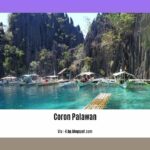Take a journey through time as we unveil The History of Puerto Princesa: A Journey from Humble Beginnings to a Thriving Metropolis. From its humble origins as a small fishing village to its present status as a bustling city, Puerto Princesa has undergone a remarkable transformation. Immerse yourself in the rich tapestry of its past as we delve into the forces that shaped this vibrant metropolis, exploring its fascinating history and rise as a commercial hub in the heart of Palawan.
Key Takeaways:
Puerto Princesa was initially known as Port Asuncion, named after Princess Asuncion of Spain.
Later, the name was changed to Puerto de la Princesa in honor of the princess after her passing.
In 1894, Puerto Princesa gained recognition as one of the most stunning towns in the country.
The city’s status evolved when it transitioned from a town to a fully recognized city in 1970.
History of Puerto Princesa


Puerto Princesa’s story is a mesmerizing tapestry woven with tales of transformation and triumph. Once a humble fishing village, it has blossomed into a vibrant city, renowned for its rich history and natural wonders.
From Princesa to Puerto Princesa
The city owes its name to Princess Asuncion of Spain, who visited the shores in the 1870s. Initially known as Port Asuncion, it was renamed Puerto de la Princesa in honor of the princess after her untimely demise.
A City of Natural Splendor
Puerto Princesa is blessed with an abundance of natural wonders that have captivated the hearts of travelers worldwide. The crown jewel of these treasures is the Puerto Princesa Subterranean River National Park, a UNESCO World Heritage Site. This awe-inspiring natural wonder features an 8.2-kilometer navigable underground river that meanders through a maze of limestone karsts, creating a breathtaking spectacle of nature’s artistry.
A Haven for Biodiversity
The city boasts a rich tapestry of flora and fauna that showcases the Philippines’ incredible biodiversity. The Puerto Princesa City Crocodile Farm and Wildlife Rescue Center provides a sanctuary for rescued crocodiles and other wildlife, offering visitors an up-close encounter with these majestic creatures.
A Thriving Metropolis
Today, Puerto Princesa is a bustling commercial hub, drawing tourists and business travelers alike. With its modern infrastructure, vibrant culinary scene, and diverse cultural offerings, the city has emerged as a thriving metropolis that seamlessly blends its rich history with a modern cosmopolitan vibe.
A Look into the City’s Past
To delve deeper into Puerto Princesa’s past, step into the Palawan Museum, where artifacts and exhibits narrate the city’s captivating journey from a simple fishing village to a modern-day metropolis.
Preserving History, Shaping the Future
The city government of Puerto Princesa remains dedicated to preserving its rich heritage while embracing sustainable development. Through initiatives like the Puerto Princesa Cultural Heritage District and the Puerto Princesa Underground River Protected Area Management Board, the city ensures that its historical treasures are safeguarded for generations to come.
Learn about the captivating historical journey of Punta Gorda, from its humble beginnings to its present-day allure.
Read the history of Punta Gorda FL and discover how this charming city evolved into a vibrant community steeped in rich heritage and inviting atmosphere.
History Of Puerto Princesa Underground River
Key Takeaways:
- Puerto Princesa Underground River features a limestone karst landscape with an underground river merging directly into the sea.
- Environmentalists discovered another floor, rock formations, marine creatures, and more in 2010.
- Exploring the river is challenging due to oxygen depletion and strong currents.
- Established in 1999, the Puerto Princesa Underground River National Park covers about 22,000 hectares.
Puerto Princesa Underground River, famed for its stunning limestone karst landscape, is a UNESCO World Heritage Site and one of the New7Wonders of Nature. Concealed within its depths, a subterranean river emerges directly into the sea, making it a natural wonder that captivates visitors worldwide.
In 2010, environmentalists and geologists stumbled upon an extraordinary secret hidden beneath the river. Their awe-inspiring discoveries included a second floor, small waterfalls, a cave dome, impressive rock formations, abundant marine life, and even a deep water hole. These wonders unveiled the hidden riches that the Underground River has kept secret for centuries.
However, venturing into the depths of the underground river poses significant challenges. Oxygen depletion and powerful water currents render navigation perilous, leaving only the bravest and most experienced explorers to venture within.
In recognition of its exceptional natural beauty, the Puerto Princesa Underground River National Park was established in 1999, encompassing over 22,000 hectares of pristine wilderness. This national park provides a haven for biodiversity, protecting the fragile ecosystem that surrounds the Underground River and ensuring its conservation for future generations.
Sources:
[1] https://whc.unesco.org/en/list/652
[2]
FAQ
Q1: What was the original name of Puerto Princesa?
A1: The original name of Puerto Princesa was Port Asuncion, named after Princess Asuncion of Spain.
Q2: When was the name of Puerto Princesa changed?
A2: The name of Puerto Princesa was changed to Puerto de la Princesa in 1872, after the death of Princess Asuncion.
Q3: What is the significance of Puerto Princesa Underground River?
A3: The Puerto Princesa Underground River is a UNESCO World Heritage Site and one of the New7Wonders of Nature.
Q4: What makes Puerto Princesa Underground River unique?
A4: Puerto Princesa Underground River is unique because it features a spectacular limestone karst landscape with an underground river that emerges directly into the sea, and also for the amazing discoveries found inside the cave in the year 2010.
Q5: When was Puerto Princesa Underground River National Park established?
A5: Puerto Princesa Underground River National Park was established in 1999, and covers an area of 22,202 hectares.
- China II Review: Delicious Food & Speedy Service - April 17, 2025
- Understand Virginia’s Flag: History & Debate - April 17, 2025
- Explore Long Island’s Map: Unique Regions & Insights - April 17, 2025
















